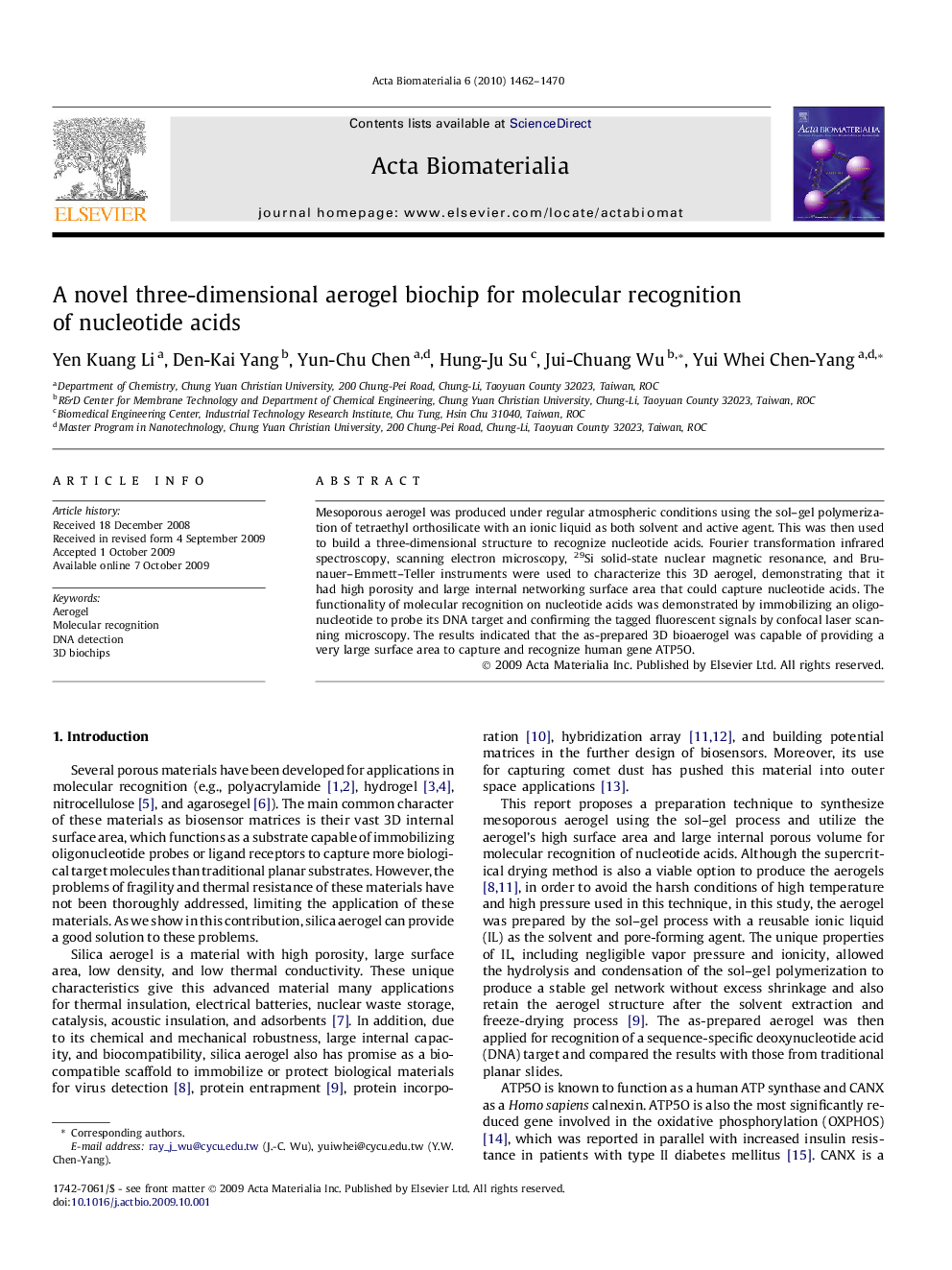| Article ID | Journal | Published Year | Pages | File Type |
|---|---|---|---|---|
| 2523 | Acta Biomaterialia | 2010 | 9 Pages |
Mesoporous aerogel was produced under regular atmospheric conditions using the sol–gel polymerization of tetraethyl orthosilicate with an ionic liquid as both solvent and active agent. This was then used to build a three-dimensional structure to recognize nucleotide acids. Fourier transformation infrared spectroscopy, scanning electron microscopy, 29Si solid-state nuclear magnetic resonance, and Brunauer–Emmett–Teller instruments were used to characterize this 3D aerogel, demonstrating that it had high porosity and large internal networking surface area that could capture nucleotide acids. The functionality of molecular recognition on nucleotide acids was demonstrated by immobilizing an oligonucleotide to probe its DNA target and confirming the tagged fluorescent signals by confocal laser scanning microscopy. The results indicated that the as-prepared 3D bioaerogel was capable of providing a very large surface area to capture and recognize human gene ATP5O.
